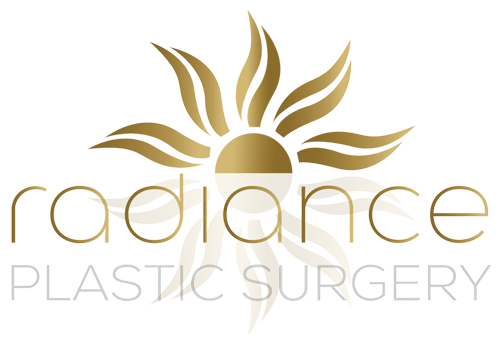When considering breast augmentation, one of the concerns you might have is whether the surgery will affect the feeling in your nipples. Nipple sensation can be a significant aspect of your overall breast health, sexual pleasure, and even the ability to breastfeed. It’s essential to be aware that any breast surgery, including the insertion of breast implants, has the potential to alter nipple sensitivity due to the changes in tissue and nerves that can occur during the procedure.
Choosing the right implant size and having a board-certified plastic surgeon perform the surgery are critical factors in minimizing the risk of complications and ensuring the best possible outcomes. Although many believe larger implants may be more likely to cause changes in sensation, studies like a follow-up in 4927 subjects suggest that the impact on nipple sensitivity and lactation issues is generally low. Breast augmentation is a highly individualized surgery, and your surgeon will work with you to determine the size and type of implant that best fits your body’s proportions and personal goals while also discussing the potential impacts on sensation.
It is essential to enter into this process with realistic expectations and thoroughly discuss any concerns you have with your plastic surgeon before proceeding with surgery. They can provide detailed information about what you might expect post-surgery, including the potential for changes in nipple sensation and how they plan to preserve nerve function as much as possible during the procedure.
Understanding Breast Augmentation
When considering breast augmentation surgery, it’s essential to understand the procedure’s specifics, the types of implants available, and how to choose an implant size that aligns with your body proportions and aesthetic goals.
Anatomy and Procedure
Breast augmentation is a plastic surgery procedure that involves placing implants either under the chest muscle (submuscular) or on top of it and under the breast gland (sub-glandular). The goal is to enhance the size and shape of your breasts. Incision placement is critical and can be inframammary (below the breast), periareolar (around the nipple), or at other discrete locations. The choice affects the visibility of scars and, potentially, your nipple sensitivity.
Types of Breast Implants
Implants are primarily made of two materials: saline and silicone. After placement, saline implants are filled with sterile salt water, allowing for a smaller incision. Silicone implants, on the other hand, are pre-filled with a viscous silicone gel. Women’s psychosocial outcomes of breast augmentation with silicone gel-filled implants are generally positive, though individual experiences may vary.
Gummy bear breast implants, a modern and increasingly popular choice for breast augmentation, are distinguished by their teardrop shape and gel-based composition. Unlike traditional saline and silicone implants, these implants are noted for their exceptional ability to maintain shape while providing a natural softness to the touch. Their robust design ensures shape retention even if the outer shell is compromised, thanks to the thicker silicone gel used in these advanced implants.
Book a consultation regarding Gummy Bear Breast Implants with Dr. Michael Laliberte at Radiance Plastic Surgery in Canmore, AB and the Calgary Area today.
Choosing the Right Implant Size
Selecting the right implant size is a careful consideration. A board-certified plastic surgeon will guide you through this decision by taking into account your body size, existing breast tissue, and personal preferences. The aim is not just about increasing breast size but also achieving a proportionate and natural-looking outcome. It’s important to note that opting for a size that’s too large may not only affect aesthetics but can increase the risk of complications or alterations in nipple sensation.
Potential Risks and Complications
When considering breast augmentation, it’s essential to understand the associated risks and potential complications, including changes in nipple sensation, physical side effects during recovery, and long-term concerns.
Nipple Sensation After Surgery
After breast implant surgery, you may experience a change in nipple sensation. This could range from increased sensitivity to a loss of sensation due to nerves being stretched or damaged during the procedure. In some cases, this change is temporary as the nerves recover, but for others, it can have a lasting effect. The research indicates that while serious issues are unlikely, long-term sensation change is still possible.
Physical Side Effects and Recovery Issues
The initial recovery period following your breast implant surgery may involve pain, swelling, and discomfort around the incision sites. You might be prescribed medication to manage pain and reduce the risk of infection. While most side effects are typically resolved within a few weeks, recovery times can vary, and it’s crucial to follow your surgeon’s guidance, including restrictions on physical activities.
Long-Term Complications
There’s a range of long-term complications that you should be mindful of. For instance, an implant leak or rupture can occur, necessitating further surgery. Additionally, you might require a breast lift in the future as a result of natural aging or weight fluctuations affecting the implant’s appearance. Concerns about anesthesia during surgery and the need for subsequent pain medications are also valid and should be discussed thoroughly with your healthcare provider. While significant complications are rare, they are important to consider and monitor over time.
Post-Surgical Care and Recovery
After breast augmentation surgery, you will need to focus on two main aspects of care: managing any changes in sensation and ensuring a smooth recovery. Proper care can influence your comfort levels and the overall outcome of the surgery.
Immediate Post-Operative Care
In the first hours and days following your surgery, it’s crucial to manage swelling and pain with medications prescribed by your surgeon. Your breasts will likely be bandaged or placed in a surgical bra. Massage may be recommended to promote circulation and reduce the risk of capsular contracture, a potential risk associated with breast implants. Adhere closely to your surgeon’s guidelines on how to handle the sensitive post-operative period.
Managing Sensation Changes and Discomfort
It’s common to experience changes in nipple sensitivity after breast implants. Some people report hypersensitivity, while others notice reduced sensation. This can be due to the swelling or nerve disruption during surgery. Use gentle care when dealing with these changes, and discuss any persistent discomfort with your surgeon. Over time, many individuals find that sensation returns to some degree, although it may not be identical to pre-surgery levels.
Long-Term Care and Monitoring
In your long-term recovery, you’ll continue monitoring for any changes in breast or nipple sensation and maintain regular follow-ups with your surgeon. As your swelling subsides and your implants settle, pay attention to the size of the implants and how they complement or affect the size of your breasts. If you chose larger implants, be aware that they could put more strain on the tissues and potentially impact sensation. It’s crucial to report any concerning changes, particularly if you experience persistent pain, as this could indicate complications that need to be addressed. With smaller implants and smaller breasts, the recovery might be quicker, and the strain on tissues could be less significant. Lastly, if you’re considering breastfeeding after recovery, discuss this with your healthcare provider to understand any potential risks or considerations.
Making an Informed Decision
When considering breast implant surgery, it’s crucial to understand the potential for permanent loss of nipple sensation and other side effects. Thorough research and consultations with board-certified plastic surgeons should inform your choices.
Consultation with a Plastic Surgeon
Your first step should be a consultation with a board-certified plastic surgeon. It is essential to discuss your body type, desired results, and any concerns, such as the risk of painful sensations or the possibility of losing feeling in the nipples after surgery. The American Society of Plastic Surgeons recommends reviewing a surgeon’s portfolio and ensuring they’re certified to practice.
Research and Preparation
Before any medical procedure, conducting comprehensive research is a responsible step. This includes understanding the differences between saline and other types of implants, incision types, and potential costs involved. It’s also wise to look into how pregnancy might alter the results of your breast surgery.
Considering Breast Surgery in the Context of Lifestyle
Carefully consider how breast surgery fits within your lifestyle. Note that some side effects may be long-term and weigh these against how you envision your life post-operation. Remember that results can vary, and not all outcomes are immediately apparent.
Frequently Asked Questions
Breast augmentation can lead to changes in nipple sensation and raise questions about its impact on functions like breastfeeding. It’s important to understand these potential changes and what they may mean for you.
Is it possible to experience reduced sensation in the nipples following breast augmentation?
After breast augmentation, it’s common for some to experience a change in nipple sensation. This can be a temporary or sometimes permanent side effect due to nerves being stretched or damaged during surgery.
Can breast implants interfere with the ability to breastfeed?
Breast implants may interfere with lactation, although many can breastfeed successfully. Implant placement and surgical technique play crucial roles in preserving lactation abilities.
What are the indications of potential complications with breast implants?
Signs of complications can include loss of sensation, redness, swelling, and pain. Any unusual symptoms should be evaluated by a healthcare provider promptly.
How long does nerve regeneration take after breast augmentation, and can it affect sensation?
Nerve regeneration following breast augmentation can take several months to a year. As nerves heal, you may notice changes in sensation, which usually improves over time, but full sensation may not always return.
Following breast augmentation, is it normal to feel soreness or tingling in the nipples?
Post-surgery, feeling soreness or tingling in the nipples is a common and normal response as the healing process can affect nerve endings.
Will the feeling of breast implants integrate to the point where they seem normal?
Over time, breast implants typically feel more integrated and natural as your body adapts. The transition period varies between individuals.

